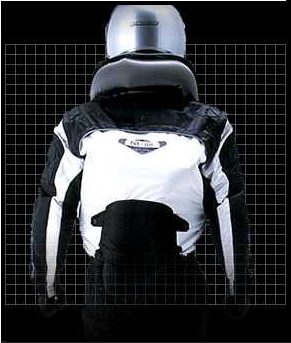 What percentage of high schoolers and their middle-aged dads go through a romantic phase, fantasizing about owning and driving a motorcycle? Fear (and practicality) drive most from that easy riding dream, perhaps goaded by a mother's painful worrying or a friend's accident. Motorcycles, in theory, personify the rugged individualism that doesn't bend to common worries and weaknesses. But, notwithstanding economists' arguments that the greater the risk to the individual the greater precaution they will take to drive safely:
What percentage of high schoolers and their middle-aged dads go through a romantic phase, fantasizing about owning and driving a motorcycle? Fear (and practicality) drive most from that easy riding dream, perhaps goaded by a mother's painful worrying or a friend's accident. Motorcycles, in theory, personify the rugged individualism that doesn't bend to common worries and weaknesses. But, notwithstanding economists' arguments that the greater the risk to the individual the greater precaution they will take to drive safely:
* Motorcyclists are about 18 times more likely to be in a fatal accident and 3 times more likely to be injured than those in passenger cars.Enter the motorcycle airbag---a need long waiting to be met.
* The fatality rate for motorcyclists was 3.6 times greater than the fatality rate for occupants of passenger cars.
*Motorcyclists accounted for 7 percent of all traffic deaths, 8 percent of all occupant deaths, and 2 percent of all occupants injured. (2000)
In 1994, Kenji Takeuchi witnessed a random motorcycle accident on his way to work in Japan and decided to build a man-mounted airbag, called the Hit-Air. When a rider is thrown-off the bike in a collosion, the Hit-Air cord attached to the rider's leg is detached, triggering the inflation of two air bags--one about the neck and the other at the small of the back. The air bags deflate automatically about 6 seconds later.
Brilliant, simple, direly needed, and the motorcycle industry apparently snubbed their nose at Takeuchi's idea, fearing it would only caution
 customers with worries of fatal crashes (another victory for business ethics). Takeuchi however manufactured the Hit-Airs on his own, and is now making a tidy profit in Europe, Asia, Australia and South America. According to Damn Interesting (apt title, that), Hit-Air isn't avaialble in the U.S. yet due to liability issues. Via Digg.
customers with worries of fatal crashes (another victory for business ethics). Takeuchi however manufactured the Hit-Airs on his own, and is now making a tidy profit in Europe, Asia, Australia and South America. According to Damn Interesting (apt title, that), Hit-Air isn't avaialble in the U.S. yet due to liability issues. Via Digg.




0 Comments:
Post a Comment